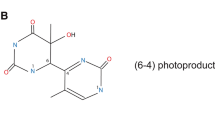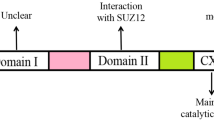Abstract
Aldehyde dehydrogenases (ALDHs), enzymes responsible for detoxification and retinoic acid biosynthesis, are considered a potent functional stem cell marker of normal and malignant cells in many tissues. To date, however, there are no available data on ALDH distributions and functions in oral mucosa. This study aims to clarify the levels and types of ALDH expression using immunohistochemistry with accompanying mRNA expression as well as an ALDEFLUOR assay, and to assess phenotypic and histological changes after manipulation of the ALDH activity of oral keratinocytes to increase the potency of a tissue-engineered oral mucosa by a specific ALDH inhibitor, diethylaminobenzaldehyde (DEAB), together with small interfering RNA of ALDH1A3 and ALDH3A1. Results showed the mRNA and cytoplasmic protein expression of ALDH1A3 and ALDH3A1 to be mostly localized in the upper suprabasal layer although no ALDH1A1 immunoreaction was detected throughout the epithelium. Oral keratinocytes with high ALDH activity exhibited a profile of differentiating cells. By pharmacological inhibition, the phenotypic analysis revealed the proliferating cell-population shifting to a more quiescent state compared with untreated cells. Furthermore, a well-structured epithelial layer showing a normal differentiation pattern and a decrease in Ki-67 immunopositive basal cells was developed by DEAB incubation, suggesting a slower turnover rate efficient to maintain undifferentiated cells. Histological findings of a regenerated oral epithelium by ALDH1A3 siRNA were similar to those when treated with DEAB while ALDH3A1 siRNA eradicated the epithelial regenerative capacity. These observations suggest the effects of phenotypic and morphological alterations by DEAB on oral keratinocytes are mainly consequent to the inhibition of ALDH1A3 activity.











Similar content being viewed by others
References
Ahmad S, Kolli S, Li D-Q, de Paiva CS, Pryzborski S, Dimmick I, Armstrong L, Figueiredo FC, Lako M (2008) A putative role for RHAMM/HMMR as a negative marker of stem cell-containing population of human limbal epithelial cells. Stem Cells 26:1609–1619
Balber AE (2011) Concise review: aldehyde dehydrogenase bright stem and progenitor cell populations from normal tissues: characteristics, activities, and emerging uses in regenerative medicine. Stem Cells 29:570–575
Banh A, Xiao N, Cao H, Chen C-H, Kuo P, Krakow T, Bavan B, Khong B, Yao M, Ha C, Kaplan MJ, Sirjani D, Jensen K, Kong CS, Mochly-Rosen D, Koong AC, Le Q-T (2011) A novel aldehyde dehydrogenase-3 activator leads to adult salivary stem cell enrichment in vivo. Clin Cancer Res 17:7265–7272
Chen YC, Chen YW, Hsu HS, Tseng LM, Huang PI, Lu KH, Chen DT, Tai LK, Yung MC, Chang SC, Ku HH, Chiou SH, Lo WL (2009) Aldehyde dehydrogenase 1 is a putative marker for cancer stem cells in head and neck squamous cancer. Biochem Biophys Res Commun 385:307–313
Chute JP, Muramoto GG, Whitesides J, Colvin M, Safi R, Chao NJ, McDonnell DP (2006) Inhibition of aldehyde dehydrogenase and retinoid signaling induces the expansion of human hematopoietic stem cells. Proc Natl Acad Sci USA 103:11707–11712
Clay M, Tabor M, Owen J, Carey T (2010) Single-marker identification of head and neck squamous cell carcinoma cancer stem cells with aldehyde dehydrogenase. Head Neck 32:1–7
Corti S, Locatelli F, Papadimitriou D, Donadoni C, Salani S, Del Bo R, Strazzer S, Bresolin N, Comi GP (2006) Identification of a primitive brain-derived neural stem cell population based on aldehyde dehydrogenase activity. Stem Cells 24:975–985
Day DA, Tuite MF (1998) Post-transcriptional gene regulatory mechanisms in eukaryotes: an overview. J Endocrinol 157:361–371
De Paiva CS, Pflugfelder SC, Li DQ (2006) Cell size correlates with phenotype and proliferative capacity in human corneal epithelial cells. Stem Cells 24:368–375
Deng S, Yang X, Lassus H, Liang S, Kaur S, Ye Q, Li C, Wang L-P, Roby KF, Orsulic S, Connolly DC, Zhang Y, Montone K, Bützow R, Coukos G, Zhang L (2010) Distinct expression levels and patterns of stem cell marker, aldehyde dehydrogenase isoform 1 (ALDH1), in human epithelial cancers. PLoS ONE 5:e10277
Dong YJ, Peng TK, Yin SJ (1996) Expression and activities of class IV alcohol dehydrogenase and class III aldehyde dehydrogenase in human mouth. Alcohol 13:257–262
Estey T, Piatigorsky J, Lassen N, Vasiliou V (2007) ALDH3A1: a corneal crystallin with diverse functions. Exp Eye Res 84:3–12
Fujimori Y, Izumi K, Feinberg SE, Marcelo CL (2009) Isolation of small-sized human epidermal progenitor/stem cells by gravity assisted cell sorting (GACS). J Dermatol Sci 56:181–187
Gasparetto M, Sekulovic S, Brocker C, Tang P, Zakaryan A, Xiang P, Kuchenbauer F, Wen M, Kasaian K, Witty MF, Rosten P, Chen Y, Imren S, Duester G, Thompson DC, Humphries RK, Vasiliou V, Smith C (2012) Aldehyde dehydrogenases are regulators of hematopoietic stem cell numbers and B-cell development. Exp Hematol 40:318–329
Gibbs S, Backendorf C, Ponec M (1996) Regulation of keratinocyte proliferation and differentiation by all-trans-retinoic acid, 9-cis-retinoic acid and 1,25-dihydroxy vitamin D3. Arch Dermatol Res 288:729–738
Ginestier C, Hur MH, Charafe-Jauffret E, Monville F, Dutcher J, Brown M, Jacquemier J, Viens P, Kleer CG, Liu S, Schott A, Hayes D, Birnbaum D, Wicha MS, Dontu G (2007) ALDH1 is a marker of normal and malignant human mammary stem cells and a predictor of poor clinical outcome. Cell Stem Cell 1:555–567
Glimm H, Oh IH, Eaves CJ (2000) Human hematopoietic stem cells stimulated to proliferate in vitro lose engraftment potential during their S/G(2)/M transit and do not reenter G(0). Blood 96:4185–4193
Hatakeyama S, Ishida K, Takeda Y (2010) Changes in cell characteristics due to retinoic acid; specifically, a decrease in the expression of claudin-1 and increase in claudin-4 within tight junctions in stratified oral keratinocytes. J Periodontol Res 45:207–215
Hedberg JJ, Grafström RC, Vondracek M, Sarang Z, Wärngård L, Höög JO (2001) Micro-array chip analysis of carbonyl-metabolising enzymes in normal, immortalised and malignant human oral keratinocytes. Cell Mol Life Sci 58:1719–1726
Hildebrand J, Rütze M, Walz N, Gallinat S, Wenck H, Deppert W, Grundhoff A, Knott A (2011) A comprehensive analysis of microRNA expression during human keratinocyte differentiation in vitro and in vivo. J Invest Dermatol 131:20–29
Hotta T, Yokoo S, Terashi H, Komori T (2007) Clinical and histopathological analysis of healing process of intraoral reconstruction with ex vivo produced oral mucosa equivalent. Kobe J Med Sci 53:1–14
Huang EH, Hynes MJ, Zhang T, Ginestier C, Dontu G, Appelman H, Fields JZ, Wicha MS, Boman BM (2009) Aldehyde dehydrogenase 1 is a marker for normal and malignant human colonic stem cells (SC) and tracks SC overpopulation during colon tumorigenesis. Cancer Res 69:3382–3389
Ida-Yonemochi H, Maruyama S, Kobayashi T, Yamazaki M, Cheng J, Saku T (2012) Loss of keratin 13 in oral carcinoma in situ: a comparative study of protein and gene expression levels using paraffin sections. Mod Pathol 25:784–794
Izumi K, Terashi H, Marcelo CL, Feinberg SE (2000) Development and characterization of a tissue-engineered human oral mucosa equivalent produced in a serum-free culture system. J Dent Res 79:798–805
Izumi K, Feinberg SE, Terashi H, Marcelo CL (2003) Evaluation of transplanted tissue-engineered oral mucosa equivalents in severe combined immunodeficient mice. Tissue Eng 9:163–174
Izumi K, Tobita T, Feinberg SE (2007) Isolation of human oral keratinocyte progenitor/stem cells. J Dent Res 86:341–346
Izumi K, Inoki K, Fujimori Y, Marcelo CL, Feinberg SE (2009) Pharmacological retention of oral mucosa progenitor/stem cells. J Dent Res 88:1113–1118
Izumi K, Neiva RF, Feinberg SE (2011) Intra-oral grafting of tissue-engineered human oral mucosa. Oral Craniofac Tissue Eng 1:103–111
Jackson B, Brocker C, Thompson DC, Black W, Vasiliou K, Nebert DW, Vasiliou V (2011) Update on the aldehyde dehydrogenase gene (ALDH) superfamily. Hum Genomics 5:283–303
Knight ZA, Shokat KM (2007) Chemical genetics: where genetics and pharmacology meet. Cell 128:425–430
Koenig U, Amatschek S, Mildner M, Eckhart L, Tschachler E (2010) Aldehyde dehydrogenase 1A3 is transcriptionally activated by all-trans-retinoic acid in human epidermal keratinocytes. Biochem Biophys Res Commun 400:207–211
Koppaka V, Thompson DC, Chen Y, Ellermann M, Nicolaou KC, Juvonen RO, Petersen D, Deitrich RA, Hurley TD, Vasiliou V (2012) Aldehyde dehydrogenase Inhibitors: a comprehensive review of the pharmacology, mechanism of action, substrate specificity, and clinical application. Pharmacol Rev 64:520–539
Ma I, Allan AL (2011) The role of human aldehyde dehydrogenase in normal and cancer stem cells. Stem Cell Rev 7:292–306
Marcato P, Dean CA, Pan D, Araslanova R, Gillis M, Joshi M, Helyer L, Pan L, Leidal A, Gujar S, Giacomantonio CA, Lee PWK (2011) Aldehyde dehydrogenase activity of breast cancer stem cells is primarily due to isoform ALDH1A3 and its expression is predictive of metastasis. Stem Cells 29:32–45
Marchitti SA, Brocker C, Stagos D, Vasiliou V (2008) Non-P450 aldehyde oxidizing enzymes: the aldehyde dehydrogenase superfamily. Expert Opin Drug Metab Toxicol 4:697–720
Marchitti SA, Chen Y, Thompson DC, Vasiliou V (2011) Ultraviolet radiation: cellular antioxidant response and the role of ocular aldehyde dehydrogenase enzymes. Eye Contact Lens 37:206–213
Moreb JS, Zucali JR, Zhang Y, Colvin MO, Gross MA (1992) Role of aldehyde dehydrogenase in the protection of hematopoietic progenitor cells from 4-hydroperoxycyclophosphamide by interleukin 1 β and tumor necrosis factor. Cancer Res 52:1770–1774
Moreb JS, Ucar D, Han S, Amory JK, Goldstein AS, Ostmark B, Chang LJ (2012) The enzymatic activity of human aldehyde dehydrogenases 1A2 and 2 (ALDH1A2 and ALDH2) is detected by Aldefluor, inhibited by diethylaminobenzaldehyde and has significant effects on cell proliferation and drug resistance. Chem Biol Interact 195:52–60
Muramoto GG, Russell JL, Safi R, Salter AB, Himburg HA, Daher P, Meadows SK, Doan P, Storms RW, Chao NJ, McDonnell DP, Chute JP (2010) Inhibition of aldehyde dehydrogenase expands hematopoietic stem cells with radioprotective capacity. Stem Cells 28:523–534
Nakamura T, Endo K, Kinoshita S (2007) Identification of human oral keratinocyte stem/progenitor cells by neurotrophin receptor p75 and the role of neurotrophin/p75 signaling. Stem Cells 25:628–638
Oraldi M, Saracino S, Maggiora M, Chiaravalloti A, Buemi C, Martinasso G, Paiuzzi E, Thompson D, Vasiliou V, Canuto RA (2011) Importance of inverse correlation between ALDH3A1 and PPARγ in tumor cells and tissue regeneration. Chem Biol Interact 191:171–176
Pappa A, Brown D, Koutalos Y, DeGregori J, White C, Vasiliou V (2005) Human aldehyde dehydrogenase 3A1 inhibits proliferation and promotes survival of human corneal epithelial cells. J Biol Chem 280:27998–28006
Schlüter H, Paquet-Fifield S, Gangatirkar P, Li J, Kaur P (2011) Functional characterization of quiescent keratinocyte stem cells and their progeny reveals a hierarchical organization in human skin epidermis. Stem cells 29:1256–1268
Sládek NE (2003) Human aldehyde dehydrogenases: potential pathological, pharmacological, and toxicological impact. J Biochem Mol Toxicol 17:7–23
STEMCELL Technologies Inc. (2012) Technical bulletins and mini reviews. http://www.stemcell.com/en/Technical-Resources/Technical-Bulletins-Mini-Reviews.aspx. Accessed 22 June 2012
Visus C, Ito D, Amoscato A, Maciejewska-Franczak M, Abdelsalem A, Dhir R, Shin DM, Donnenberg VS, Whiteside TL, DeLeo AB (2007) Identification of human aldehyde dehydrogenase 1 family member A1 as a novel CD8+ T-cell-defined tumor antigen in squamous cell carcinoma of the head and neck. Cancer Res 67:10538–10545
Wagner W, Wein F, Seckinger A, Frankhauser M, Wirkner U, Krause U, Blake J, Schwager C, Eckstein V, Ansorge W, Ho AD (2005) Comparative characteristics of mesenchymal stem cells from human bone marrow, adipose tissue, and umbilical cord blood. Exp Hematol 33:1402–1416
Yokota A, Takeuchi H, Maeda N, Ohoka Y, Kato C, Song SY, Iwata M (2009) GM-CSF and IL-4 synergistically trigger dendritic cells to acquire retinoic acid-producing capacity. Int Immunol 21:361–377
Acknowledgments
We would like to thank Drs. Mayumi Kisaka, Aya Yokota and Aki Shiomi, and Messrs Ki-ichi Takeuchi and Masaaki Hoshino for technical assistance. The authors declare no conflicts of interest with regard to the authorship and/or publication of this paper. This work was supported by a Grant-in-Aid for the Promotion of Science (No. 21659455) to T.M., in part by a Grant-in-Aid for Scientific Research (B) (No. 22390371) to K.I. from the Japan Science and Technology Agency and research for Promoting Technological Seeds from Independent Administrative Corporation Japan Science and Technology Agency (No. 05-033) to K.I.
Author information
Authors and Affiliations
Corresponding author
Rights and permissions
About this article
Cite this article
Kato, H., Izumi, K., Saito, T. et al. Distinct expression patterns and roles of aldehyde dehydrogenases in normal oral mucosa keratinocytes: differential inhibitory effects of a pharmacological inhibitor and RNAi-mediated knockdown on cellular phenotype and epithelial morphology. Histochem Cell Biol 139, 847–862 (2013). https://doi.org/10.1007/s00418-012-1064-7
Accepted:
Published:
Issue Date:
DOI: https://doi.org/10.1007/s00418-012-1064-7




